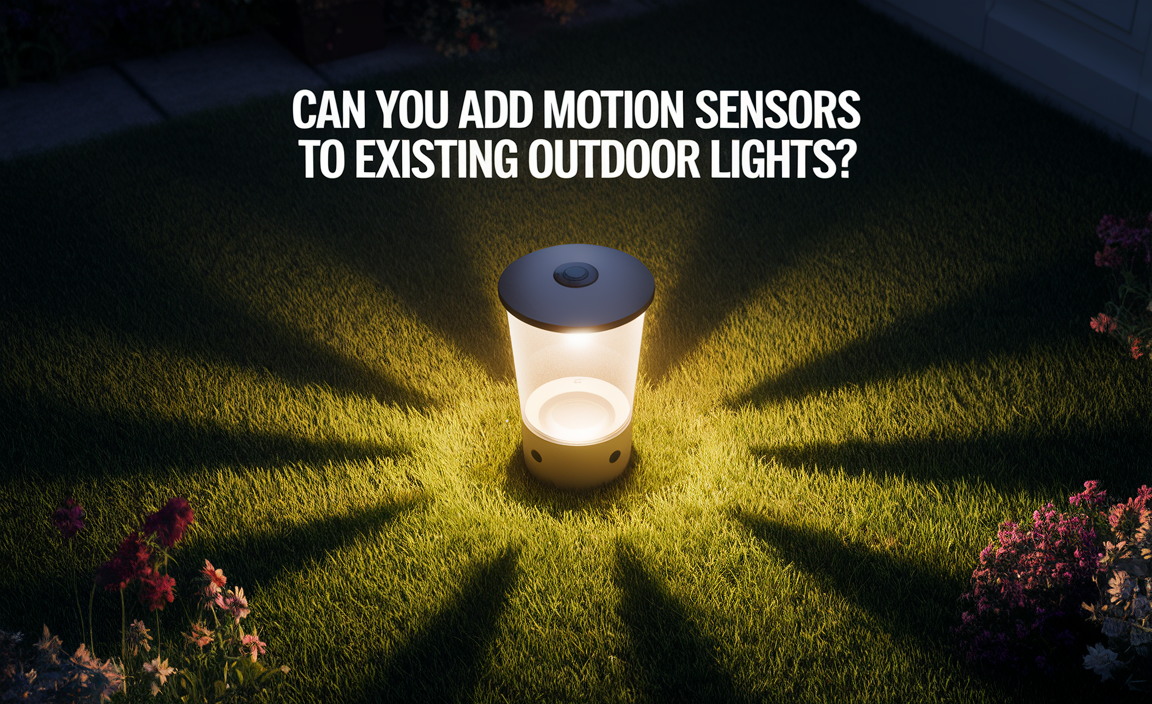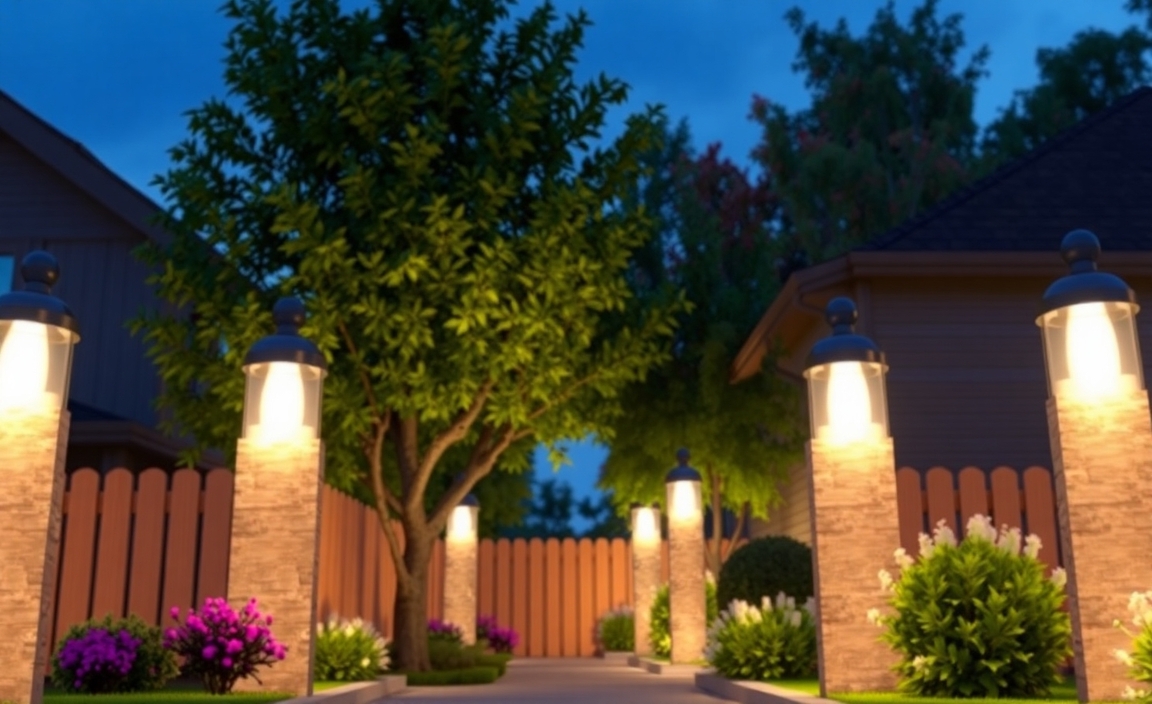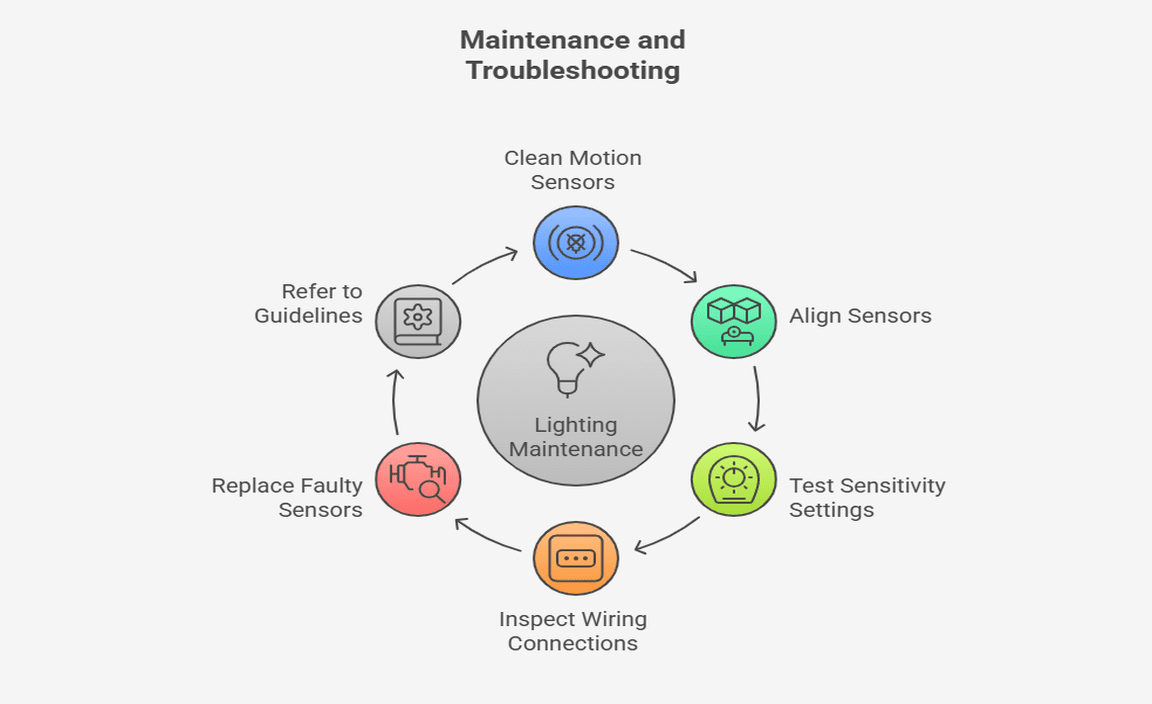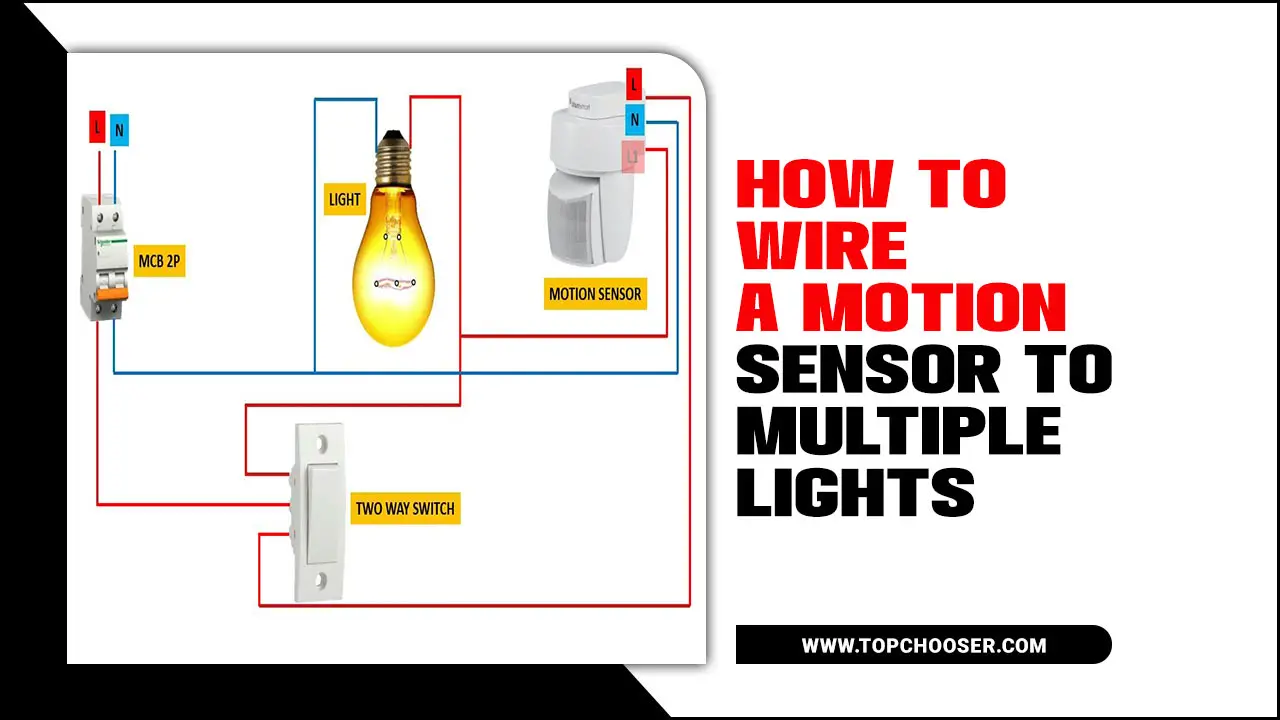Motion sensors have become increasingly popular outdoors, providing added security and convenience for homeowners and businesses alike. But what about existing outdoor spaces? Can motion sensors be easily incorporated into already established outdoor areas?
This question has become common among those looking to enhance their outdoor security measures or add a touch of modern technology to their backyard. We will explore the possibility of adding motion sensors to existing outdoor spaces and the benefits and considerations that come with it. From understanding the different types of motion sensors available to determine the best placement for optimal effectiveness, we will provide a comprehensive guide for integrating motion sensors into your outdoor environment.

What are motion sensors?
Motion sensors detect movement in their surrounding environment and trigger a response, such as turning on outdoor lighting. Motion sensors in outdoor lighting provide security and convenience by automatically illuminating areas when motion is detected, deterring potential intruders, and providing visibility in dark areas. This technology enhances safety and energy efficiency in outdoor spaces.
How Can You Add Motion Sensors to Existing Outdoor Lights

You can add motion sensors to existing outdoor lights for improved security and convenience. By installing motion sensors, your lights will automatically turn on when movement is detected, deterring potential intruders and providing light when needed. This upgrade enhances the functionality of your outdoor lighting system, making it more efficient and effective in various situations. Here are step-by-step processes to add a motion sensor to existing outdoor lights.
1. Turn off the power:
Before starting any work, turn off the power to the existing outdoor lights at the circuit breaker to avoid the risk of electric shock. Electric shock occurs when a person comes into contact with an electrical current from a live wire or a faulty appliance. The severity of electric shock can range from a slight tingling sensation to cardiac arrest. This is why it is important to always take necessary precautions when working with electricity, including turning off the power at the circuit breaker before beginning any work.
2. Choose the location:
Decide on the best location to install the motion sensor, ensuring it has a clear line of sight and is within the detection range of the existing outdoor lights. Place the sensor in areas with minimal obstructions, such as walls, trees, or other objects. This will allow for a wider range of coverage and increase the chances of accurately detecting any movement.
3. Remove the existing light fixture:
Carefully remove the existing outdoor light fixture to access the wiring. The step in this process is carefully removing the existing outdoor light fixture. This is a crucial step as it will allow you to access the wiring and properly disconnect it before installing the new fixture. Use the screwdriver to loosen and remove any screws or bolts that are holding the fixture in place. As you do this, be mindful of loose wires attached to the fixture.
4. Install the motion sensor:
When installing a motion sensor, following the manufacturer’s instructions is key for functionality and safety. Start by selecting the mounting location based on space needs and manufacturer recommendations. Then, carefully follow the installation guidelines, including the necessary tools and steps. Pay special attention to the wiring diagram for proper wire connection to avoid malfunctions.
5. Mount the sensor:
Secure the motion sensor in place using the mounting hardware provided. This should be where you want to detect motion, such as near a doorway or in a high-traffic area. Ensuring it is positioned correctly for optimal motion detection. Once you have chosen the perfect spot, use a drill to create holes in the designated area for the mounting hardware. Make sure to measure and mark the holes accurately to avoid any mistakes.
6. Connect the wires:
Connect the wires from the motion sensor to the existing wiring of the outdoor lights, following the color coding or labeling provided. Identify the wires from the motion sensor. These should be labeled or color-coded for easy identification. The most common color coding is black for hot, white for neutral, and green or bare copper for ground. However, following the specific color coding the manufacturer provides is important.
7. Test the motion sensor:
Turn the power back on and test the motion sensor to ensure it functions correctly. One crucial component to test is the motion sensor. This device detects movement and triggers a response, such as turning on lights or sounding an alarm. Without a properly functioning motion sensor, the safety and security of a home or business could be compromised. Make any necessary adjustments to the settings for sensitivity and duration.
8. Secure the wiring:
Once the motion sensor works properly, secure the wiring and mount the outdoor light fixture back in place. This can be done by conducting a thorough check of its functionality. Start by activating the sensor and observe if it responds to movement within its range. If the sensor detects any movement or does not trigger the light, there may be an issue with the wiring.
9. Adjust the settings:
Fine-tune the settings of the motion sensor as needed to suit your preferences and maximize energy efficiency. Essentially, it detects movement and triggers the lights or appliances connected to it to turn on or off accordingly. By adjusting the sensitivity and range of the sensor, you can control how often and how long the lights or appliances stay on.
Maintenance and Troubleshooting

Regular maintenance of lighting fixtures is essential for optimal performance. Motion-activated lights are a convenient option, ensuring energy efficiency and security. Checking and replacing light bulbs when needed can prevent flickering and dimming issues. Inspecting the junction box for any loose connections is important to avoid electrical hazards. Smart lights offer innovative solutions to control lighting and reduce light pollution. If facing complex issues, seeking professional help is advisable for a safe and effective resolution. Here’s some maintenance and troubleshooting tips:
- Clean motion sensors regularly
- Align sensors properly
- Test sensitivity settings
- Inspect wiring connections
- Replace faulty sensors promptly
- Refer to the manufacturer’s guidelines
Benefits of Adding Motion Sensors to Existing Outdoor Lights
Adding motion sensors to existing outdoor lights can provide numerous benefits for homeowners. By incorporating infrared light technology and motion-sensing lights, individuals can enhance the security of their property. Installing a motion sensor kit or switch box increases energy efficiency by only activating lights when needed, leading to cost savings. Furthermore, this innovative technology offers added convenience by automatically turning on lights in response to motion, eliminating the need to switch them on and off manually. Some benefits are:
- Increased security: Motion sensors deter intruders and enhance property security.
- Energy efficiency: Lights activate only when motion is detected, saving electricity.
- Convenience: Motion sensors automate outdoor lighting, enhancing ease of use.
- Extended bulb life: Reduces bulb usage duration, prolonging lifespan.
- Enhanced safety: Improves visibility for accident prevention.
Conclusion:
Adding motion sensors to existing outdoor lights can greatly improve your lighting system’s functionality and energy efficiency. Adding motion sensors to existing outdoor lights is a smart and practical way to enhance your lighting system’s functionality and energy efficiency. Not only do they provide added security and convenience, but they also reduce energy waste by only turning on when needed. With the variety of available options, it is easy to find a motion sensor that fits your specific needs and budget. Consider upgrading your outdoor lights with motion sensors for a smarter, more efficient lighting solution. As always, it is best to consult a professional for installation to ensure proper wiring and placement for optimal performance.
FAQ:
Do motion sensors react to light?
Some advanced motion sensors may be able to adjust sensitivity based on ambient light conditions to prevent false alarms caused by changes in lighting.
Do motion sensor lights use electricity?
Yes, motion sensor lights use electricity to operate. They are typically connected to a power source and consume electricity when activated by motion.
Where should I put motion sensors?
Motion sensors should be placed in areas of high traffic or where intruders are most likely to enter, such as near doors, windows, and hallways. Additionally, you can place them in rooms with valuable items or sensitive information.
Do motion sensors work in the dark?
Yes, motion sensors can work in the dark as they detect movement based on heat emitted by objects rather than relying on visible light.
Are motion sensors like cameras?
Motion sensors are different from cameras. Motion sensors detect movement or changes in their environment and trigger a response, such as turning on a light or setting off an alarm.
Resource:
outdoor lighting efficiency tips: https://www.energy.gov/energysaver/lighting-controls/outdoor-lighting
safe electrical wiring practices: https://www.familyhandyman.com/project/electrical-wiring-safety-tips/
choosing a reliable motion sensor: https://www.thisoldhouse.com/home-safety/review/best-motion-sensor
energy-saving device benefits: https://www.consumerreports.org/energy-saving/

I am passionate about home engineering. I specialize in designing, installing, and maintaining heating, ventilation, and air conditioning systems. My goal is to help people stay comfortable in their homes all year long.


